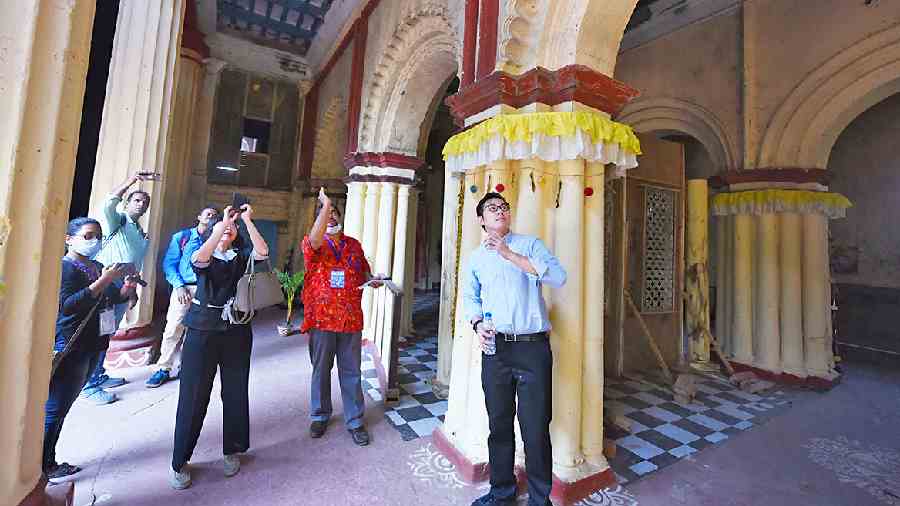A town on the southeastern outskirts of Kolkata that was more discussed for an aborted plan to turn it into a district administrative headquarters has a history about which many are little aware.
Some of the stories of Baruipur date back to the 15th century.
It has a house where Bankim Chandra Chattopadhyay had lived while serving as a deputy magistrate in Baruipur and a place where Mahaprabhu Chaitanya spent some time en route to Puri.
The house where Bankim Chandra lived was owned by Dwarakanath Tagore, grandfather of Rabindranath Tagore.
A few kilometres away in Kodalia, now in the Rajpur-Sonarpur Municipality area, is where Netaji Subhas Chandra Bose’s father Janaki Nath Bose was born.
The Telegraph accompanied a team, which included Acharapan Yavaprapas, the consul general of Royal Thai consulate-general and Riazul Islam, the counsellor (education and sports) at the deputy high commission for Bangladesh, to these places on Friday.
Nimakmahal
In a lane running beside the New India Club ground, opposite Rabindra Bhavan, is the building known as Nimakmahal where Bankim Chandra Chattopadhyay lived.
“Bankim Chandra lived here between 1864 and 1868. He was a deputy magistrate at the Baruipur court,” said Souvik Chakraborty, a researcher with Bespoke Art and Unique Legacies (BAUL), an organisation that aims to raise awareness about lesser-known heritage, the organisers of Friday’s tour.
The website of Baruipur Municipality mentions that “Sri Bankim Chandra Chatterjee created the wonderful novel Durgeshnandini between 1864-69 while he was the Deputy Magistrate of Baruipur”.
The house belonged to Dwarakanath Tagore, who bought it while he was associated with the salt trade.
Chakraborty said Dwarakanath also lived and worked from the building while he was the collector of the Baruipur salt division.
Entering the premises one can see a portrait of Dwarakanath hanging on the portico. Unfortunately for heritage enthusiasts, the house is not open for public viewing.
The house is now used for filming movies and television serials. Its durgadalan is unique because its exteriors look like that of a church while inside Pujas were held.
Netaji’s house
Subhas Chandra Bose’s father, Janaki Nath Bose, was born in Kodalia, now a part of the area governed by the Rajpur-Sonarpur Municipality.
Pallab Kumar Das, the chairperson of the municipality, who was present during the visit to Kodalia said Subhas Chandra Bose had also visited the house several times.
A portion of the building is now a post office.
“The house remains open to visitors on Netaji’s birthday, Republic Day, Independence Day, Mahatma Gandhi’s birthday and INA Day,” said Das.
Graced by saint
Sri Chaitanya Mahaprabhu, the 15th-century saint had stayed in the house of a resident, Ananta Lal Acharya, while on his way to Cuttack, said Kuntal Choudhury, a volunteer for BAUL.
A monastery built in the area has preserved the steps of the saint. An adjacent pond is said to be where the saint took a bath before his journey.
It is now known as Kotki pukur and the area is Mahaprabutala.
Among the other places visited on Friday were the house of the Roy Chowdhury family, the zamindars of Baruipur.
“We were originally zamindars of Rajpur village. Later we got the zamindari of Baruipur also,” said Shakti Roy Chowdhury, a descendant of the family and the current chairperson of the Baruipur Municipality.
A privately run museum with collections of various artefacts and things of use in the Sunderbens is also another treasure trove.
The museum is located on the ground floor of a building a few steps away from the office of SDPO, Baruipur.
